| |
|
|
|
|
This is our 1856 Pattern Enfield Cavalry Carbine. It is a small, light carbine for the US Civil War period.
These photos show one of the production replica guns alongside of the original in our collection it was copied from so you can see the attention to detail that went into this replica.
|
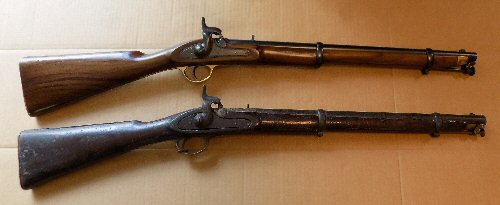
|
| |
|
|
|
|
Here it is from the left. The barrel is 21" long and the whole thing is only 36 1/2" long. This neat little gun only weighs 6 lb.
As a cavalry carbine, the 1856 Pattern Carbine does not have sling swivels like a full sized musket would. Instead it is carried via an over-the-shoulder sling with a hook on it which would secure to the sling loop on the sling bar. The sling bar also functions as a sideplate.
|
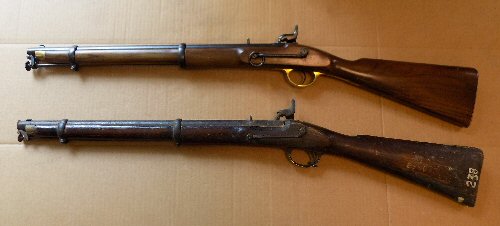
|
| |
|
|
|
|
The rust blued lock is marked with the VR Cypher and the word Tower. On the replicas, the VR Cypher and the word Tower are both forward of the hammer, while on the original guns the VR Cypher was behind the hammer. It is forward of the hammer on the replicas for legal reasons involving export.
Our 1856 Pattern Cavalry Carbine comes with a period-correct Parker Hale type nipple that uses winged musket caps. This type of nipple is tapered and the cone is taller than what you see on the Italian replicas.
|
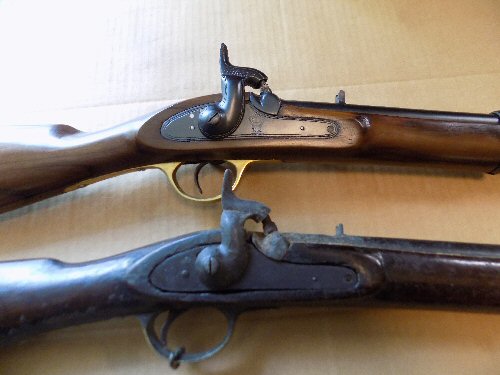
|
| |
|
|
|
|
The 1856 Pattern Carbine uses has a captured rammer. This kept you from loosing the rammer while on horseback but it also eliminated two steps from the manual of arms because you don't flip the rammer over to load with it, then flip it back over to return it to it's slot. This increases the rate of fire. The knob on the end of the rammer is simply a handle and does not get pushed down the barrel like a traditional rammer.
|
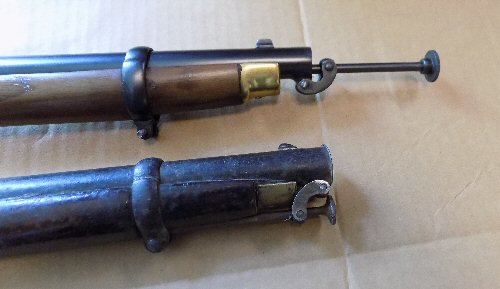
|
| |
|
|
|
|
Here is the cast brass triggerguard. The original gun has some sort of unit markings in Sandskrit(?) as this particular gun came out of govenrment storage in Rajasthan where it had been since it was captured in the 1857-1859 Sepoy Rebellion.
The 1856 Pattern Carbine uses a typical Enfield type triggerguard with two screws on the rear strap.
|
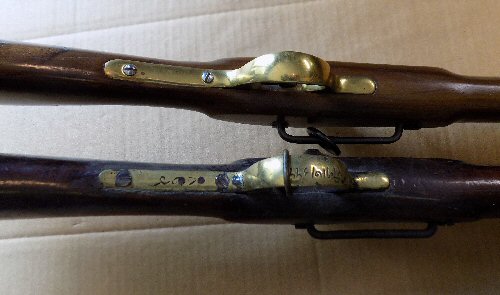
|
| |
|
|
|
|
A view of the comb area showing the tang of the brass buttplate. The buttplate is secured with screws from the rear and the tang is secured via a pinned tennon.
Especially interesting in the this photo is that the tang on the original gun is off center and still bears rough file marks on top from when it was made 160+ years ago. A close study of original military guns will show all sorts of stuff like this.
|
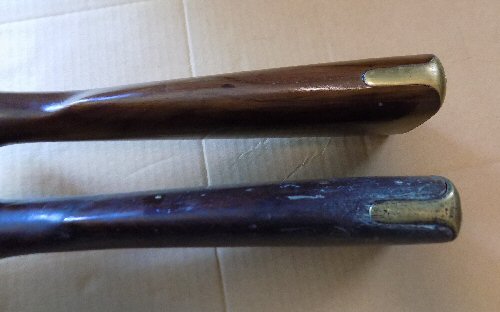
|
| |
|
|
|
|
Here a view from above showing the breech. In this photo you can see the seam where the screwed in breechplug butts up against the barrel. Italian replicas are made using a breech casting that the barrel screws into, but these are made using the historically correct screwed breechplug and welded bolster just as they were 150+ years ago.
|
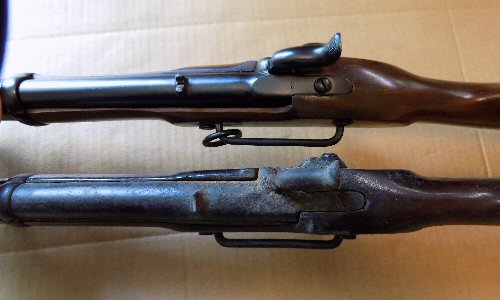
|
| |
|
|
|
|
As a cavalry carbine, you would carry it with a shoulder strap that had a hook on it. The hook would clip to the saddle ring to leave your hands free for using the reins of your horse.
Here is Caleigh, demonstrating how a cavalry sling is worn and how much freedom of movement you have to bring the gun up to bear. If she were carrying this 1856 Pattern Carbine on a horse, the muzzle of the gun would go in a special loop on the side of the saddle to keep it from flopping around and it's weight would be supported by the shoulder sling. At this time we do not have slings available for these but we are busy searching for a vendor so we can offer them at a reasonable price.
|
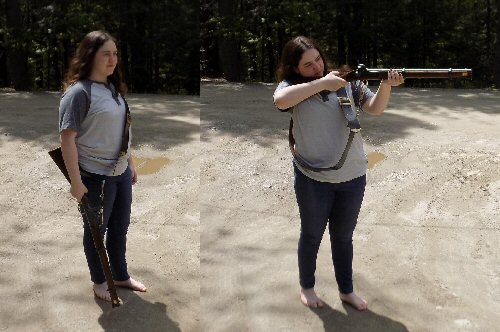
|
| |
|
|
|
|
Many people seem baffled about the breech construction on these. This photo compares the breech construction of an Italian made replica, and original 19th century Enfield musket and an Indian made replica.
The Italian made replicas are built using a one-piece casting for the breech section into which the barrel screws. That is certainly not a histrorically correct procedure. Our 1856 Pattern Carbine and all of our other percussion weapons are built the way the originals were, with the barrel continuing all the way through the breech area, a seperate breechplug and the bolster being a separate forged part which is welded via a skirt of steel to the barrel.
A picture is worth 1000 words, so just look at this photo to compare our correctly built replica to an original musket and an incorrectly built Italian copy.
|
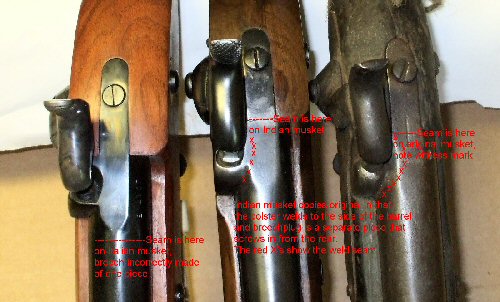
|
|


















